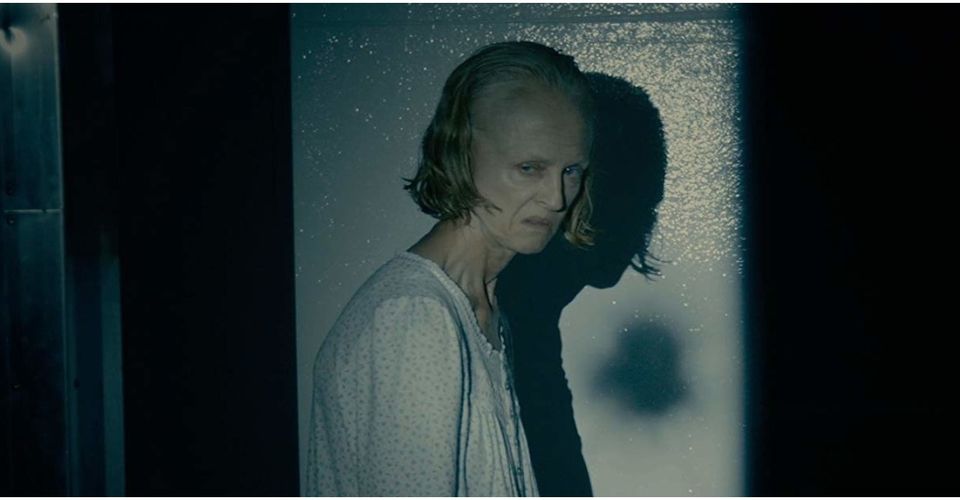The Taking Of Deborah Logan Ending Explained

Adam Robitel’s possession thriller, The Taking of Deborah Logan, is one of the more thoughtful films within the horror genre with a terrifying climax and an ending both sad and unsettling. Robitel, who would go on to direct the well-received Insidious: The Last Key, uses the found footage framework to his advantage, thus creating a realistic docudrama feel that adds to the suspense.
Starring All My Children’s Jill Larson as the title character and Bombshell’s Anne Ramsay, who gives a heartbreaking turn as Deborah’s concerned daughter Sarah, this faux documentary stays grounded through their dedicated performances. The plot involves a documentary crew studying Deborah, the former owner of a telephone operating service, who is in the early stages of Alzheimer’s. Though reluctant to expose herself to a group of strangers, she is encouraged to participate by Sarah who hopes to keep their family home with the money made from the production. As Deborah begins to exhibit signs of the disease, certain behaviors suggest that something supernatural might be at play.
The ending of The Taking of Deborah Logan leaves little ambiguity as to the motives of Deborah’s actions. However, one of the reasons that this film so successfully builds tension is the believable relationship between the ailing title character and her daughter. It isn’t until the third act, when the physical manifestation of the supernatural is revealed, that the viewer is given unequivocal evidence of possession. Deborah’s deteriorating mental state, which has weighed heavily on Sarah, creates a shared mania that almost makes the increasingly bizarre events seem within reason. Here is an explanation of the climax and the ending of the film.
What Happened At The Climax Of The Taking Of Deborah Logan

At the climax of The Taking of Deborah Logan, Deborah has kidnapped young cancer patient Cara (Julianne Taylor) with the intention of finishing the ritual. At this point it is clear that Deborah has been possessed by the spirit of Henry Desjardins, who needs a fifth virgin sacrifice in order to gain immortality. Sarah tells the authorities that she believes her mother has stolen a car and taken the child to Monacan Hill, the area where Desjardins murdered the four other girls. She arrives with the police and the documentary crew consisting of med students Mia, Michelle Ang from The Twilight Zone, and videographer Luis (Jeremy DeCarlos).
After an unsuccessful attempt at restraining Deborah, Sarah, Mia and Luis track her and Cara to the caves where the children were murdered. Deborah is found devouring the head of Cara, her mouth extended like a snake. Sarah shoots at her, stopping her mother from swallowing the girl. While Cara is taken away, Sarah sets the bag with Desjardins’ remains on the ground and sets it on fire. With his physical remains destroyed, according to legend, his “spiritual parasite” has been vanquished. The last shots of Sarah comforting her mother, confused but lucid and alive, bring the core drama to a close.
The Taking Of Deborah Logan: What Does The Ending Mean?

In the aftermath of the abduction, there is a series of news clips that offer closure to story. Deborah is deemed unfit to stand trial for the death of Sheriff Tweed (Tonya Bludsworth, Stranger Things) because of her continued mental decline. The film catches up with Cara several months later in full remission from her cancer. She is celebrating her tenth birthday with her family; the picture of perfect health. When she is asked about her future plans, she states that she doesn’t have any. After being pressed further, she states that she does have a plan, but it’s a secret. The newscaster closing voiceover finishing with, “It’s an unbelievable story – with such a happy ending”. Cara turns to the camera and smiles guardedly—Desjardins is likely in control.
The screenplay, written by Robitel and Gavin Heffernan, both of whom worked on the script for Paranormal Activity: The Ghost Dimension, manages to effectively interweave the supernatural with a grounded human drama. Using possession as an allegory for the agonizing pain that Alzheimer’s can cause, the film works on various levels. The fact the Deborah is diagnosed with the disease allows the filmmakers to take the more insidious repercussions to the extreme. The feelings of loss, desperation and complete helplessness that relatives of the affected often experience are realistically portrayed through Sarah’s plight. What is also explored is the guilt children often feel when they are unable to provide the necessary medical attention to their ailing parent.
The Taking Of Deborah Logan: Guilt and Snake Symbolism

Sarah eventually discovers that her mother helped cover up the murder of Desjardins after learning of his plans to use Sarah as his final sacrifice. The guilt, that she is responsible for her mother’s possession, can be easily transposed to any adult child dealing with a parent’s dementia. Another subtle aspect of the script is that it is inferred that Sarah is gay, which might also add another layer of guilt in their mother/daughter dynamic. While the film never veers into stereotype, we are given just enough information to understand and sympathize with Sarah, who might have additional baggage with her mom. Ramsay’s portrayal of the character is so layered that her unspoken inner turmoil is completely relatable.
The serpent symbolism, used throughout the film, is a metaphor for the change in Deborah herself. She is literally becoming a snake, transforming into a different entity by shedding the skin of her former self. The possessed Deborah spits venom and bites aggressors; traits not so far removed from people who experience dementia. The reptiles, used in Desjardins’ ancient ritual, are often symbolic of rebirth, transformation and immortality. The snakes seen in the crew’s footage are constant reminders of the impending transformation. Though Deborah’s life is spared, it is unclear whether or not the possession affected her disease, as a serpent also symbolizes death.
While The Taking of Deborah Logan never received a wide theatrical release outside of Europe, it became a much-respected cult hit after its debut on Netflix in 2014. A high-profile re-release on multiple streaming platforms solidified its success in the fall of 2019, which made the film accessible to a much wider audience.

















